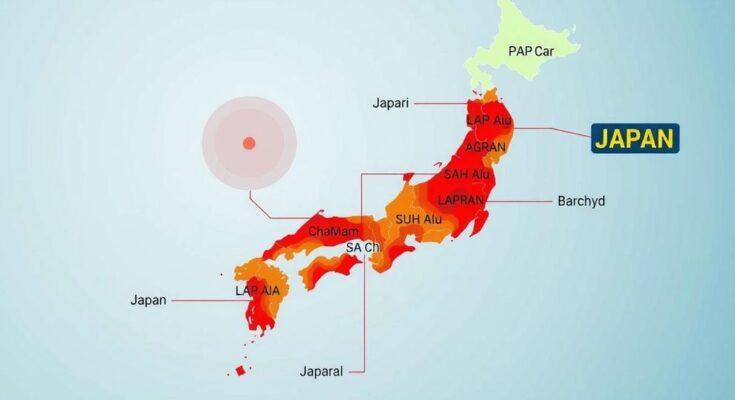Japan’s earthquake task force estimates a potential death toll of up to 298,000 from a Nankai Trough megaquake, with economic losses reaching 270 trillion yen. While the estimate reflects some improvements in disaster readiness, it underscores the need for enhanced evacuation strategies and infrastructure development. The report emphasizes the critical importance of timely evacuations to reduce fatalities, particularly from tsunamis.
A revised estimate by the government’s earthquake task force indicates that up to 298,000 individuals in Japan could perish in a megaquake occurring in the Nankai Trough. This figure represents a decrease of approximately 10 percent from the previous estimate in 2012, attributed to recent damage mitigation efforts. However, this reduction is still significantly below the aimed 80 percent decrease in fatalities set out in the government’s 2014 disaster prevention strategy, revealing an urgent need for revisions in evacuation protocols and infrastructural enhancements.
The latest report further projects that the number of individuals expected to evacuate during such an event will rise from an earlier estimate of 9.5 million to 12.3 million, which is roughly 10 percent of Japan’s entire population. In a potentially devastating scenario, 764 municipalities across 31 of Japan’s 47 prefectures are expected to experience seismic activity measuring at least a lower 6 on the seismic intensity scale of 7 or face tsunami waves exceeding 3 meters.
Economic repercussions are anticipated to reach as much as 270 trillion yen (approximately $1.8 trillion), a notable increase from the earlier assessment of 214 trillion yen. Despite some improvements in residential seismic retrofitting, the maximum expected total for buildings that might be completely destroyed has only slightly decreased to 2.35 million. The task force indicates that out of the maximum projected fatalities, approximately 215,000 would result from tsunamis, based on the assumption that just 20 percent of those at risk would evacuate without delay.
Enhancing the evacuation rate to 70 percent could potentially lower the tsunami-related death toll to 94,000, thereby emphasizing the critical necessity of prompt evacuations. The report also indicates a 30 percent increase in areas likely to experience flooding exceeding 30 centimeters, which arises from advancements in topographical data analysis. Despite efforts such as seawalls and tsunami evacuation facilities, the overall expected death toll may remain high.
One concerning scenario suggests that if a magnitude 9-class earthquake were to occur on a winter night, the resulting fatalities could be particularly devastating, with Shizuoka Prefecture projected to bear the brunt with an estimated 101,000 deaths, followed by Miyazaki and Mie Prefectures at 33,000 and 29,000, respectively. Moreover, the government has for the first time estimated that there could be between 26,000 and 52,000 additional “disaster-related deaths,” stemming from issues like the deterioration of health in evacuation shelters.
To address these risks, the government plans to revise its disaster prevention framework to include expanded priority areas based on increased flooding risk assessments. Additionally, a new national resilience initiative will be developed for the fiscal period from 2026 to 2030, aiming to enhance infrastructure development. A new agency dedicated to disaster prevention is also slated for establishment in fiscal 2026.
The potential impact of a megaquake in the Nankai Trough presents a severe threat to Japan, with the government estimating up to 298,000 fatalities and extensive economic losses. Although recent measures have contributed to a smaller estimated death toll compared to prior forecasts, significant challenges remain in evacuation effectiveness and infrastructure readiness. Comprehensive revisions to disaster prevention strategy and resources are imperative to safeguard lives and property in anticipation of such a catastrophic event.
Original Source: english.kyodonews.net




